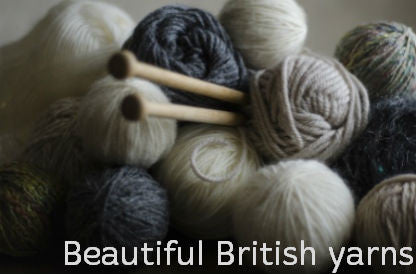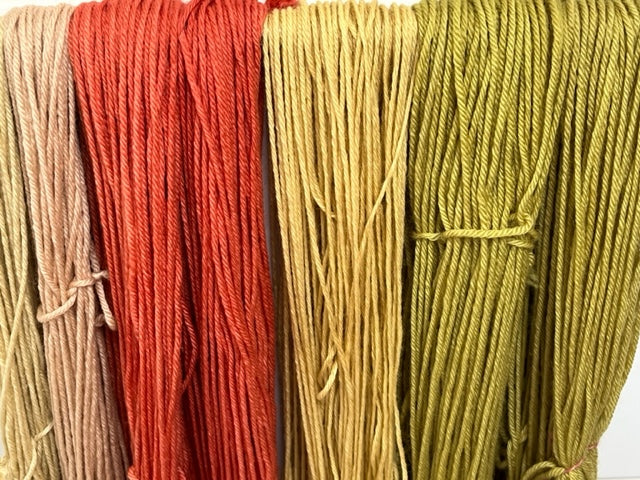Local Colour Interview
Some of you may have spotted a new yarn addition to the shop -
Local Colour. We are so excited to be stocking this all-natural dyed yarn in all its glorious shades! This yarn is 100% merino wool and is dyed using locally grown, seasonal plants and flowers. We asked Ruth, who started Local Colour, to tell us more about her process and what makes her yarn so unique, and we loved hearing all she had to say. We’re sure you will too!

An introduction from Ruth about Local Colour:
'Local Colour' came about when I combined my love of plants and knitting. I have an allotment in Hurstpierpoint, a lovely village just north of the South Downs in West Sussex where I have started to develop a 'dye garden', hoping to include as many different plants as possible. Not easy on a small plot! As time went on I was dyeing more wool than I could personally use and then came the idea of selling it at local craft fairs and shops. It was marvellous when on a visit to Exeter I found Wool on the Exe and Debbie showed an interest in my wool and now I am delighted to say she is stocking it in her lovely shop!
I am also keen to pass on what knowledge I have gained in the last few years, and run workshops at Pitfield Cut Flower Farm in Hurstpierpoint. More information can be obtained from Pitfieldbarn.co.uk and localcolourhurst@gmail.com.
What first drew you towards flowers, plants and the natural Dyeing process?
I've always been interested in plants and have had a garden wherever I've lived, including Dubai! I was born on a farm in Wiltshire, so grew up with a love of the countryside and wild flowers. I've had an allotment for about 15 years and it wasn't until I met a new allotment holder who was keen to grow dye plants too that we inspired each other to make a start about 4 years ago. We bought a basic kit and started to experiment, it grew from there.
What do you love about using local natural resources to dye your yarn?
I love using local plants to dye wool because the colours are all natural and they all go together, there are no clashes. Who would have thought that you'd get a lovely rich brown from red dahlias!
How often do you run your dyeing workshops? What's the general response from participants been?
We have run 2 workshops, and so far, the response has been very positive. This is a review that a kind participant left on the CraftCourses Website (where I advertise the workshops):
“I attended this day course with a friend. We had a really enjoyable day. The tutors were friendly, knowledgeable and informative. The other students were great fun. We dyed wool using readily obtainable items such as onion skins and dried daffodil flowers, we were given information about dyes, mordents and shade cards and we were able to experiment with our own mixture of colours toward the end of the day. We were provided with tea, coffee and lovely cakes and we were able to take home 4 skeins of wool dyed in 4 different shades. There was wool available to purchase, also ready-made items e.g. cushions. We were treated to a tour around the flower farm which was very interesting. A thoroughly lovely day. Would highly recommend."



Do you have a favourite flower and/or plant to dye with?
No, I don't have a favourite - although daffodils and madder are front runners!
What plants would you recommend for anyone who wants to experiment with natural dyeing for the first time? And any you'd recommend planting in the garden for any keen gardeners!
The plants I'd recommend are: daffodils, cosmos sulphureus, red dahlias, purple hollyhocks, madder, weld, woad and Japanese Indigo.
Thank you so much for chatting to us Ruth! We hope you all enjoyed this little insight into this lovely yarn as much as we did - why not pop along to the shop to support Local Colour, or
view the range on our website to see if any particular natural colourways take your fancy!









